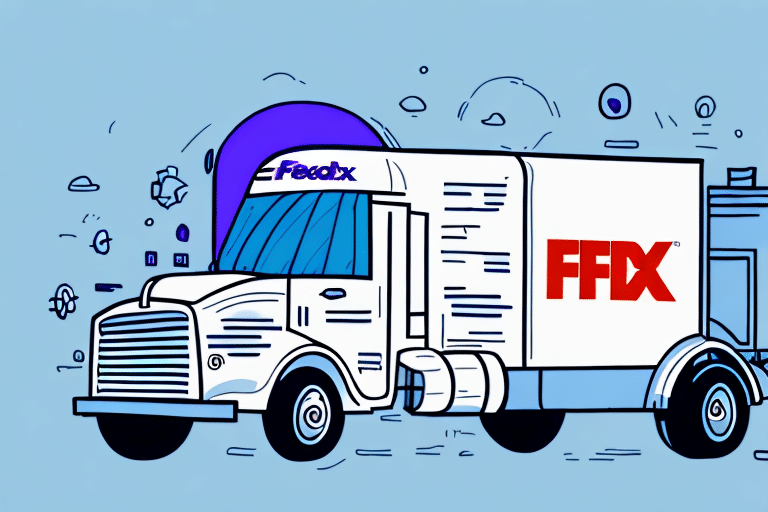If you own an e-commerce store or handle logistics for your business, you understand the importance of shipping and delivery in ensuring customer satisfaction. United Parcel Service (UPS) is one of the leading courier services in the world, and when integrated with HubSpot, it can help streamline your shipping and delivery processes, ultimately leading to enhanced customer experience. In this article, we will explore how to connect, optimize, and manage UPS for HubSpot to maximize your business's efficiency and profitability.
Why Integrate UPS with HubSpot?
Integrating UPS with HubSpot brings many benefits to e-commerce businesses. First, it helps manage shipping and delivery tracking from one central hub. Business owners no longer have to log in to UPS to track orders or manually input data into HubSpot. The integration between the two platforms provides a seamless experience for handling logistics from start to finish.
Secondly, the integration automates processes that were previously tedious and time-consuming. With a few clicks, you can generate shipping labels and update the status of an order. This automation saves time, reduces errors, and allows businesses to focus on other areas of their operations.
Thirdly, integrating UPS with HubSpot provides real-time shipping rates and delivery estimates. This allows businesses to provide accurate shipping costs to their customers and set realistic delivery expectations. This transparency can improve customer satisfaction and reduce the number of inquiries related to shipping and delivery.
Lastly, the integration allows businesses to easily manage returns and exchanges. With UPS and HubSpot working together, businesses can streamline the process of receiving returned items, issuing refunds or exchanges, and updating inventory levels. This simplifies the process for both the business and the customer, improving overall satisfaction and reducing the workload for customer service teams.
Benefits of Integrating UPS with HubSpot
The benefits of integrating UPS with HubSpot go beyond automation and centralization of logistics. By integrating the two, businesses can access real-time data and shipping analytics, which can help optimize delivery processes.
Analyzed data such as delivery times, parcel weights, shipping destinations, and costs can help businesses determine the most efficient delivery strategies, optimizing both time and cost spent on shipping. The insights from these analytics can also facilitate forecasting of shipping costs into financial forecasts.
Another benefit of integrating UPS with HubSpot is the ability to provide customers with real-time shipping updates. This feature allows customers to track their packages and receive notifications on delivery status, estimated delivery times, and any delays or issues that may arise. This level of transparency and communication can improve customer satisfaction and loyalty, as well as reduce customer service inquiries related to shipping.
Understanding the Integration Process
Integrating UPS with HubSpot clients requires several steps to be executed in sequence. The first step involves the creation of an API key for HubSpot and UPS. The API key allows for seamless communication between the two platforms. The hub of the integration between HubSpot and UPS must be set up by logging into the HubSpot account and navigating to the marketplace. From the market place you can select 'Utilities' and locate the UPS integration. It is advisable to follow the attached guidelines in the installation process to ensure the optimal utilization of the integration.
Once the integration is set up, you can start using the UPS shipping functionality within HubSpot. This includes the ability to create shipping labels, track packages, and manage shipments directly from your HubSpot account. The integration also allows for real-time shipping rates to be displayed on your website, providing a seamless checkout experience for your customers. It is important to note that the UPS integration may require additional fees, depending on your HubSpot subscription and UPS account type. Be sure to review the pricing details before enabling the integration.
How to Connect UPS with HubSpot: Step-by-Step Guide
Connecting UPS with HubSpot requires a few simple steps. The procedure involves the following steps:
- Step 1: Create a UPS account. For the integration, you must be a registered UPS customer.
- Step 2: Create a HubSpot account, if you haven't already.
- Step 3: Purchase and install the UPS connector from the HubSpot Marketplace.
- Step 4: Add your UPS account credentials to the HubSpot connector.
- Step 5: Set up your shipping method.
- Step 6: Activate the sync between your accounts.
Once you have completed the integration process, you will be able to access a range of features that will help you streamline your shipping process. For example, you can use HubSpot to automatically generate shipping labels and track packages in real-time. Additionally, you can use the data collected by HubSpot to gain insights into your shipping performance and identify areas for improvement. By connecting UPS with HubSpot, you can save time, reduce errors, and improve your overall shipping efficiency.
Configuring the UPS-HubSpot Integration for Optimal Results
After setting up the UPS-HubSpot integration, it is essential to configure it to your unique business processes. Configurations of rates, shipping preferences, and syncing options should be appropriately done. It is advised that you refer to HubSpot's carrier connectors guidelines to optimize the integration in accordance with your business needs.
Additionally, it is recommended to regularly monitor the integration's performance and make necessary adjustments. This includes checking for any errors or delays in syncing data between UPS and HubSpot, as well as ensuring that the integration is accurately calculating shipping rates and delivery times. By regularly reviewing and optimizing the UPS-HubSpot integration, you can ensure that your business is operating efficiently and providing the best possible customer experience.
Tips for Managing Your UPS-HubSpot Integration Effectively
To get the most out of your UPS-HubSpot integration, it is vital to maintain it effectively. It would be best to allocate a team to manage the integration to ensure that you capitalize on UPS-HubSpot’s full suite of capabilities. Ensure your team carries out routine checks, and where necessary, updates supplied by the HubSpot and UPS collaboration guides. Handle exceptions intelligently too—for example, if a customer has an address mistake, ensure you can quickly flag the issue and correct it before the package is shipped.
Another essential tip for managing your UPS-HubSpot integration effectively is to ensure that you have a clear understanding of your business needs. This will help you to identify the specific features and functionalities that you need to focus on. For instance, if you are a small business, you may only need basic shipping and tracking capabilities. On the other hand, if you are a large enterprise, you may require more advanced features such as real-time inventory management and automated shipping label generation.
Finally, it is crucial to keep your team up-to-date with the latest developments in the UPS-HubSpot integration. This can be achieved by attending webinars, reading blogs, and participating in online forums. By staying informed, you can ensure that your team is equipped with the knowledge and skills needed to manage the integration effectively and take advantage of new features as they become available.
Common Challenges and Solutions for the UPS-HubSpot Integration
Even with the best integration plans, you may still face some common integration challenges that hinder smooth logistics processes. Common hurdles include rates discrepancies and shipping method inconsistencies. To overcome these challenges, it is recommended that you enlist the help of a HubSpot consultant or gather valuable resources provided by HubSpot and UPS to minimize the disruption and get your integration running smoothly.
Another common challenge that businesses face when integrating UPS and HubSpot is the lack of real-time tracking and visibility. This can lead to delays in delivery and customer dissatisfaction. To address this issue, businesses can leverage UPS's tracking and visibility tools, such as Quantum View, to provide customers with real-time updates on their shipments.
Additionally, businesses may encounter difficulties in managing returns and exchanges through the integrated system. To overcome this challenge, it is recommended that businesses establish clear return policies and procedures, and communicate them effectively to customers. HubSpot's customer service tools can also be utilized to streamline the returns process and ensure customer satisfaction.
Automating Shipping Processes with HubSpot and UPS
The integration between HubSpot and UPS can automate most of your shipping processes. This integration allows efficient communication between the two systems, automating actions like generating shipping labels, tracking orders, and updating shipping status. Automation reduces time spent on administration and increases accuracy.
Additionally, the integration also provides real-time shipping rates and delivery dates, allowing you to provide accurate shipping costs and delivery estimates to your customers. This can improve customer satisfaction and reduce the number of inquiries related to shipping. With HubSpot and UPS integration, you can streamline your shipping processes and focus on growing your business.
Utilizing Data Insights to Improve Shipping Efficiency
The integration enables HubSpot and UPS to provide valuable insight into your shipping processes. Businesses can access real-time data and analyses that provide timely information that helps optimize shipping strategies. These insights help improve delivery times while minimizing the cost and resources spent on shipping.
Tracking and Monitoring Shipping Performance with HubSpot and UPS
The HubSpot and UPS integration provides businesses with an all-in-one hub for tracking and monitoring shipping performance. As an e-commerce business, it's crucial to ensure that you maintain high levels of performance through prompt and efficient deliveries. The integration will provide you with the necessary tracking information to ensure that shipped items are delivered on time and within budget.
Maximizing ROI through a Seamless HubSpot-UPS Integration
The integration between HubSpot and UPS creates a cohesive logistics management solution that can return substantial ROI. By simplifying processes, businesses can allocate more time and resources to other profit-generating activities. As the system optimizes delivery strategies, companies can realize substantial cost reductions that translate into increased profitability.
Best Practices for Maintaining Your UPS-HubSpot Integration Over Time
To sustain the long-term benefits of the UPS-HubSpot integration, businesses must adhere to best practices that help maintain the integration's functionality over time. These best practices may include monitoring and changing settings as required, ensuring that there is always a fallback plan for when integration challenges arise and configuring the integration to fit the company's specific needs. Continuous maintenance and evaluation will help maximize the integration's potential benefits and ensure that a business can always deliver the best possible customer experience.
Conclusion
Integrating UPS with HubSpot can bring numerous benefits to e-commerce businesses. From automation to real-time analytics to optimized strategies, the integration between HubSpot and UPS can help enhance efficiency and profitability. However, to fully realize the integration's potential, businesses must manage the integration properly by understanding every step in the process, adhering to best practices, and proactively ensuring that any integration issues are handled in a timely and efficient manner.









